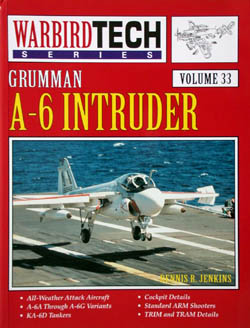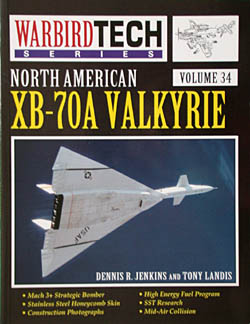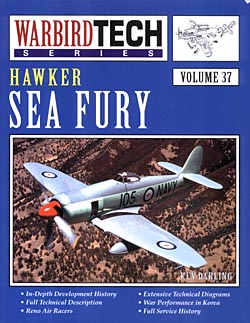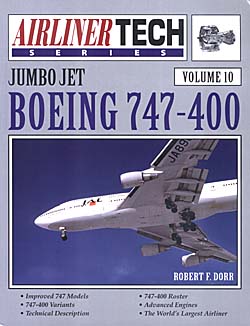SCALEWORLD By Richard Marmo | | Wind up behind in your work and catching up is comparable to trying to climb out of a quicksand pit. The faster you climb, the deeper you sink. Because of that, this month's Scaleworld is comprised totally of book reviews. If you were expecting kits or tools, all of these book reviews are probably depressing. However, there is a bright side to it. The more references you have, the better your next model will be. Read on. WW-II was over and peace was only five years old when the next war to claim American lives reared its ugly head. Unlike WW-II, this one wasn't described as a war…instead, it was a Police Action. You and I know it as the Korean War and by many as the Forgotten War. Whatever it's name, it set the stage for the ascendancy of that magnificent jet fighter known as the North American F-86 Sabre Jet…and the Aces that would ride her to victory near the North Korean/Chinese border area called Mig Alley. SPECIALTY PRESS (https://www.specialtypress.com) has released a magnificent new hardcover book, appropriately titled MiG Alley by Warren E.  Thompson and David R. McLaren and priced at $39.95. With a 10" x 10" format, 190 pages, 100 b&w photos and 150 gorgeous color photos, this book is an absolute must for anyone, modeler or historian, with an interest in the F-86. Thompson and David R. McLaren and priced at $39.95. With a 10" x 10" format, 190 pages, 100 b&w photos and 150 gorgeous color photos, this book is an absolute must for anyone, modeler or historian, with an interest in the F-86. As implied by the title, the focus of this book is F-86 operations in the area of North Korea known as MiG Alley. Included in the book is an excellent map of Korea that pinpoints MiG Alley as being over the Yalu River and hard against the Chinese border. Most of the book is comprised of personal accounts describing missions into the Alley. That alone is worth the price of admission, but it's the photos that'll mesmerize the modeler. If nothing else, the dozens of high quality photos of bare metal F-86s will prove invaluable to anyone trying to replicate an authentic skin tone on their Sabre models. And then there's the nose art. Many are simply the names of girl friends or wives in letter form, such as Patricia Ann, Laurie Gail, Betty Darling, Patricia and on and on. Then there were the more familiar types of art, including (of course) sharkmouths and phrases such as Eight Ball Express. Let's not overlook The Huff, which had a rather large dragon painted on the side of the fuselage. Other examples are Spaceblazer and Ladie's Choice - The Hard Way. Another chapter is devoted to the Gunval program…a gunnery evaluation program that resulted from pilot's complaints that the 6 .50s were not lethal enough. The result of the program was a few F-86s with 4 20mm cannon operating against MiGs in Korea, obtaining results that would lead to larger caliber guns in the F-86H, F-86K, F-100 and subsequent aircraft. You'll also find a chapter that compares the MiG-15 and F-86 head to head and also includes three excellent color side views of MiG-15s. Finally, there are the appendices. Appendix A provides a complete serial number list of all Sabres that served in Korea, broken down by model, squadron assignment, miscellaneous data on aircraft names, nose art, assigned pilots where known and available information on postwar assignments. Loss codes are included where available, along with a key to the codes. Appendix B lists Sabre losses in Korea/Japan. This one is set up chronologically and includes serial number, loss code, date, pilot, unit, cause and remarks. The best part of four pages comprises this list. Appendix C uses eight pages to list all F-86 confirmed kills in Korea. Once again, the listing is chronological and includes the pilot, squadron, kills credited and the aircraft type. Moving on to Appendix D, you have a complete list of all 40 Korean War U.S. Aces. Did I say 40? Yes, indeed. The official record has always acknowledged 39 aces…until April 11, 2000. That month, the American Fighter Aces Association upgraded a 'probable' victory claimed by 1st Lt. Charles G. Cleveland on September 21, 1952 to a 'confirmed' kill…making Lt. General Charles G. Cleveland, USAF (Ret) officially a fighter ace 49 years and 7 months after the fact! The last two appendices consist of a one page bibliography and five page index. You can order MiG Alley (and any of their other fine books) by visiting the SPECIALTY PRESS website or calling them at 800-895-4585. Do keep in mind that there's a $4.95 shipping and handling fee per order. I could go on…and on…and on… about this book, but what's the point? Just go buy it.  As long as we're talking about SPECIALTY PRESS, let's take a look at several recent additions to their WarbirdTech and AirlinerTech series. First up are three WarbirdTech volumes. In all cases, the standard WarbirdTech format is followed: 8 1/2" x 11 vertical configuration, semi-stiff covers, 104 pages, 160 b&w photos and 8 pages of color. Price of each volume is their standard $16.95. Ordering information in every case is as indicated above. As long as we're talking about SPECIALTY PRESS, let's take a look at several recent additions to their WarbirdTech and AirlinerTech series. First up are three WarbirdTech volumes. In all cases, the standard WarbirdTech format is followed: 8 1/2" x 11 vertical configuration, semi-stiff covers, 104 pages, 160 b&w photos and 8 pages of color. Price of each volume is their standard $16.95. Ordering information in every case is as indicated above.
WarbirdTech Series Volume 33, Grumman A-6 Intruder by Dennis R. Jenkins is…well…typical Dennis Jenkins. If you've seen any of his other work (including the superlative Magnesium Overcast), then you know what to expect from this book. He starts with the aircraft's origin as the A2F, then works his way thru all the aircraft's variations. This includes it's service in Viet Nam. One problem that surfaced was an effective training method. Turns out that a complete A-6 radome was grafted onto a Gulfstream I turboprop, allowing plenty of room for electronics training. It's development as a tanker is described, along with the later variants. Color photos run the gamut, including some fairly heavily weathered birds. However, the three that'll really get your attention is a beautiful instrument panel shot of an A-6E TRAM, a fascinating 'Puff the magic dragon' nose art and an A-6 sporting a truly rare tan and brown wraparound camouflage scheme. No book on the A-6 would be complete without a discussion of it's stillborn replacements, the General Dynamics A-12 and the Grumman A-6F Intruder II, and both are covered in one chapter. A list of bureau numbers and a page of significant dates completes the book.  WarbirdTech Series Volume 34, North American XB-70A Valkyrie by Dennis R. Jenkins and Tony Landis. If you enjoy journeys into the would've, could've, should've, I don't believe it realm, this is a must read. The different design concepts that preceded the XB-70 as we know it today would make for a substantial addition to a collection of proposed aircraft. WarbirdTech Series Volume 34, North American XB-70A Valkyrie by Dennis R. Jenkins and Tony Landis. If you enjoy journeys into the would've, could've, should've, I don't believe it realm, this is a must read. The different design concepts that preceded the XB-70 as we know it today would make for a substantial addition to a collection of proposed aircraft.
Anyone who has ever stood beside and beneath (as I have) an XB-70 can't help but be awed by the sheer size and weight of this behemoth. Add to that the fact that it could routinely fly at Mach 3 for extended periods and it borders on the unbelievable. But it did. Chapter one details the extraordinarily convoluted path that began in 1947 with the ultimate goal the creation of a supersonic intercontinental strategic bomber. What resulted was the B-58 (supersonic and a maintenance nightmare) and the XB-70 that eventually lost out to the ICBM. From chapter two on, the XB-70 existed pretty much in the form we're all familiar with. How it got there is what the rest of the book details. There are plenty of development/construction photos, information on the Sukhoi T-4 (the Soviet counterpart to the XB-70) and extensive material on her flight activity…including photos of the fatal air-to-air collision. Another chapter details just how advanced from the state-of-the-art the XB-70 really was. Color photos start with the mock-up (including one of the F-108 mock-up before being painted white) and continue thru construction and flight. Finally, you have five appendices. Appendix A is a log of all XB-70 flights, B is a flight test summary report that gives you the pilot's perspective, C describes the Alkyborane high energy fuel, D covers the proposal to develop the XB-70 into an SST (No, that's not a misprint. Passenger load could have been as high as 78.) And E is a list of significant dates. If you like exotic aircraft designs, you'll enjoy this book. And if you happen to have one of those old 1/72 AMT XB-70 kits ratholed somewhere and are planning to eventually build it, it's an absolute necessity.  WarbirdTech Series Volume 37, Hawker Sea Fury by Kev Darling is an excellent choice for any modeler or historian whose interests lie with British fighters. The last great piston engine design, it served with glory in Korea, brought down a jet fighter in air-to-air combat and is well known to air racing enthusiasts. Unfortunately, as a highly modified air racer, a Sea Fury nosed over on landing during the 1990s (I think. Could've been the 80s.), causing the death of Charlie Hillard, Jr. WarbirdTech Series Volume 37, Hawker Sea Fury by Kev Darling is an excellent choice for any modeler or historian whose interests lie with British fighters. The last great piston engine design, it served with glory in Korea, brought down a jet fighter in air-to-air combat and is well known to air racing enthusiasts. Unfortunately, as a highly modified air racer, a Sea Fury nosed over on landing during the 1990s (I think. Could've been the 80s.), causing the death of Charlie Hillard, Jr.
Kev Darling has done an excellent job, progressing logically from concept to technical description, Korean operations, foreign service, racers and target tugs. Along the way, you'll find plenty of good, clear photos, tight detail shots, drawings and illustrations that will go far in the superdetailing of scale models. Color photos include the standard Fleet Air Arm scheme used during Korea, Australian colors, desert camouflaged Iraqi birds, a two-seat T. Mk. 20 in silver and, of course, several photos of air racers. A glossary and one page of significant dates rounds out the book. If you have a fondness for British aircraft, particularly those designed by Hawker Aircraft, you'll want to check this offering out. AirlinerTech Series Volume 10, Jumbo Jet Boeing 747-400 by Robert F. Dorr brings the story of the Boeing 747 up to date and serves as the perfect companion to the earlier AirlinerTech Series Volume 6, Boeing 747-100/200/300/SP by Dennis R. Jenkins.  The various chapters deal with what it's like to fly the -400, a discussion of why the -400 was necessary and is…for all practical purposes…a totally new aircraft that looks like a 747, technical details and a description of the airlines that are flying…or will fly…the The various chapters deal with what it's like to fly the -400, a discussion of why the -400 was necessary and is…for all practical purposes…a totally new aircraft that looks like a 747, technical details and a description of the airlines that are flying…or will fly…the
-400. There's also a near-eight-page list identifying every -400 by type, line/msn, date, registration and operator. And, of course, the usual page of significant dates. When an aircraft sports as immense an area of blank space (or canvas), can wild and wooly color schemes be far behind? Not hardly. I hesitate to call it 'nose art' because the art/special markings that adorn some of these aircraft use everything from the tail to the entire aircraft. Check out the eight pages of color to see what I'm talking about.
Japan Air Lines covered the entire fuselage of six -400s with Walt
Disney cartoon characters. All Nippon opted for the Pokemon game.
Qantas chose a variety of stylized kangaroos and Cathay Pacific tried
its own version of a kid's game. If nothing else, these schemes will
prove to be a challenge (and that's an understatement) for any model
builder. I wonder when one of these is going to show up at an IPMS
contest?
With that, I hear the deadline bell tolling loudly in the background. See ya'll next month. | 







|
 Thompson and David R. McLaren and priced at $39.95. With a 10" x 10" format, 190 pages, 100 b&w photos and 150 gorgeous color photos, this book is an absolute must for anyone, modeler or historian, with an interest in the F-86.
Thompson and David R. McLaren and priced at $39.95. With a 10" x 10" format, 190 pages, 100 b&w photos and 150 gorgeous color photos, this book is an absolute must for anyone, modeler or historian, with an interest in the F-86. As long as we're talking about SPECIALTY PRESS, let's take a look at several recent additions to their WarbirdTech and AirlinerTech series. First up are three WarbirdTech volumes. In all cases, the standard WarbirdTech format is followed: 8 1/2" x 11 vertical configuration, semi-stiff covers, 104 pages, 160 b&w photos and 8 pages of color. Price of each volume is their standard $16.95. Ordering information in every case is as indicated above.
As long as we're talking about SPECIALTY PRESS, let's take a look at several recent additions to their WarbirdTech and AirlinerTech series. First up are three WarbirdTech volumes. In all cases, the standard WarbirdTech format is followed: 8 1/2" x 11 vertical configuration, semi-stiff covers, 104 pages, 160 b&w photos and 8 pages of color. Price of each volume is their standard $16.95. Ordering information in every case is as indicated above. WarbirdTech Series Volume 34, North American XB-70A Valkyrie by Dennis R. Jenkins and Tony Landis. If you enjoy journeys into the would've, could've, should've, I don't believe it realm, this is a must read. The different design concepts that preceded the XB-70 as we know it today would make for a substantial addition to a collection of proposed aircraft.
WarbirdTech Series Volume 34, North American XB-70A Valkyrie by Dennis R. Jenkins and Tony Landis. If you enjoy journeys into the would've, could've, should've, I don't believe it realm, this is a must read. The different design concepts that preceded the XB-70 as we know it today would make for a substantial addition to a collection of proposed aircraft. WarbirdTech Series Volume 37, Hawker Sea Fury by Kev Darling is an excellent choice for any modeler or historian whose interests lie with British fighters. The last great piston engine design, it served with glory in Korea, brought down a jet fighter in air-to-air combat and is well known to air racing enthusiasts. Unfortunately, as a highly modified air racer, a Sea Fury nosed over on landing during the 1990s (I think. Could've been the 80s.), causing the death of Charlie Hillard, Jr.
WarbirdTech Series Volume 37, Hawker Sea Fury by Kev Darling is an excellent choice for any modeler or historian whose interests lie with British fighters. The last great piston engine design, it served with glory in Korea, brought down a jet fighter in air-to-air combat and is well known to air racing enthusiasts. Unfortunately, as a highly modified air racer, a Sea Fury nosed over on landing during the 1990s (I think. Could've been the 80s.), causing the death of Charlie Hillard, Jr. The various chapters deal with what it's like to fly the -400, a discussion of why the -400 was necessary and is…for all practical purposes…a totally new aircraft that looks like a 747, technical details and a description of the airlines that are flying…or will fly…the
The various chapters deal with what it's like to fly the -400, a discussion of why the -400 was necessary and is…for all practical purposes…a totally new aircraft that looks like a 747, technical details and a description of the airlines that are flying…or will fly…the 






